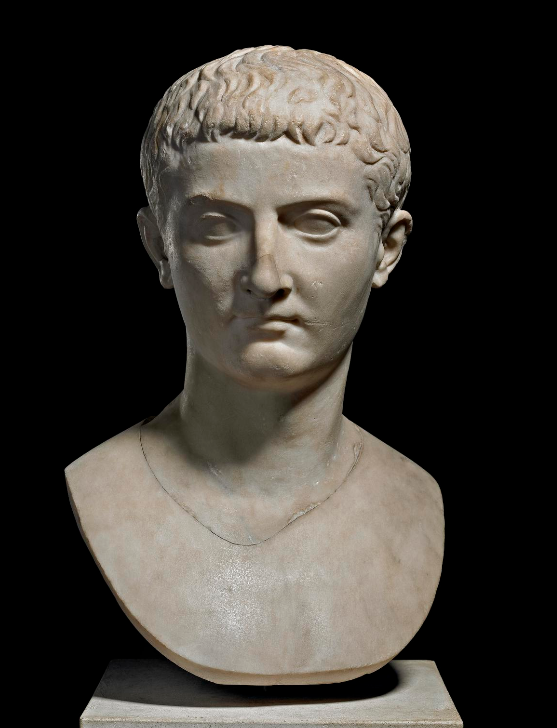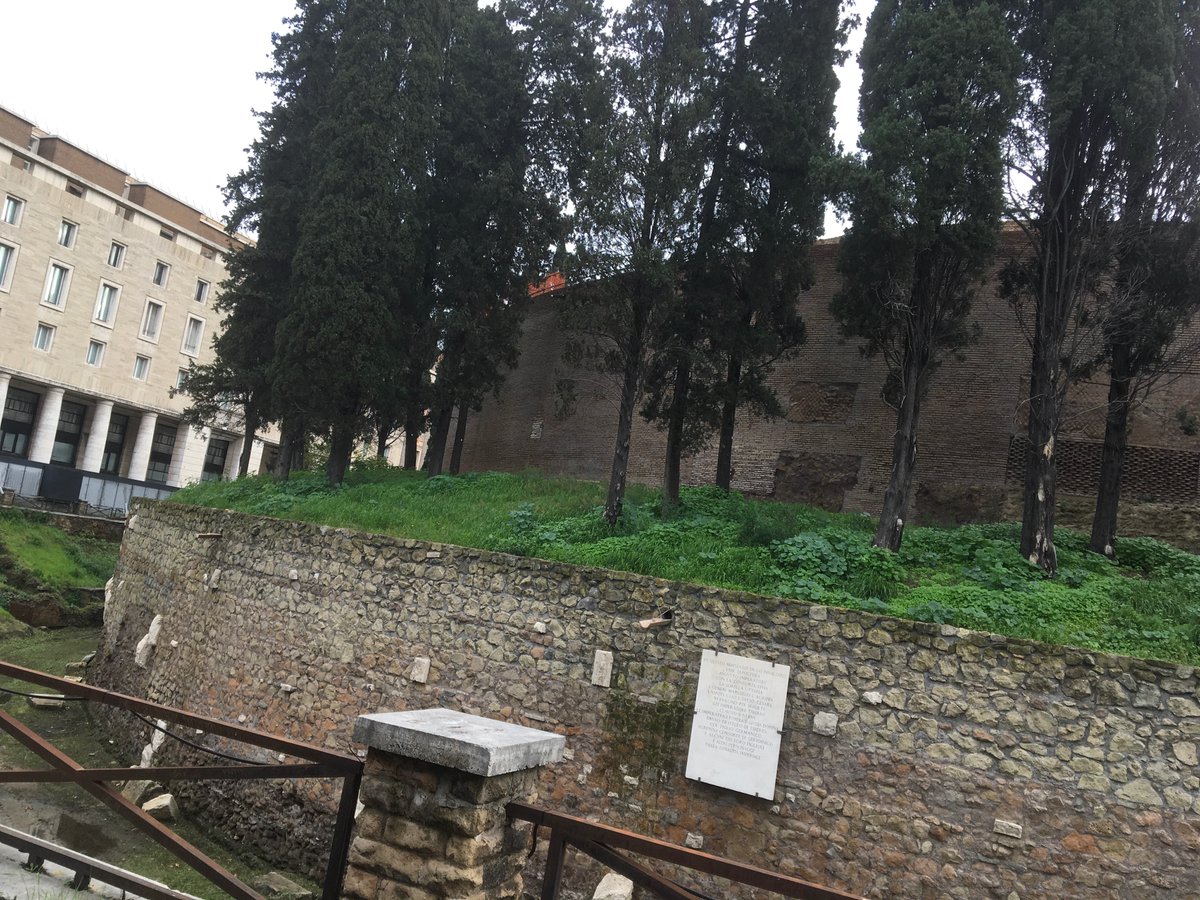Discover and read the best of Twitter Threads about #Augustus
Most recents (10)
THE IMPERIAL CULT MEETS JUDAISM
What are Jewish ritual immersion pools doing adjacent to the Augusteum (temple dedicated to the cult of #Augustus) at Samaria-Sebaste?
The 18-month embargo on this article is over today, so I’ve posted it here:
academia.edu/62122869/The_I…
A 🧵 1/10
What are Jewish ritual immersion pools doing adjacent to the Augusteum (temple dedicated to the cult of #Augustus) at Samaria-Sebaste?
The 18-month embargo on this article is over today, so I’ve posted it here:
academia.edu/62122869/The_I…
A 🧵 1/10

Excavations conducted in the first half of the 20th century at Samaria-Sebaste uncovered an Augusteum, surrounded by additional Roman-era structures. In 1992, Dan Barag published a compelling hypothesis that these buildings were a royal compound belonging to Herod himself.
2/10
2/10
ln my article, examine the function and historical significance of eight stepped pools discovered throughout this compound. I argue that these pools should be regarded as Jewish ritual immersion pools that date to the time of Herod the Great or his successors.
3/10
3/10
Oh, Rome, the eternal city, the magnificent place, the capital of the mighty #RomanEmpire. Right?
Wrong. Ok, right, but only partially.
The capital (s) of the Roman Empire (as there was more than one) and the shift to the East.
A thread 🧵
Wrong. Ok, right, but only partially.
The capital (s) of the Roman Empire (as there was more than one) and the shift to the East.
A thread 🧵

A town founded in 753 BC at the banks of Tiber, by the first century BC, Rome turned into the most important city in the Mediterranean. Its optimal location, in the middle of #Italy, right in the centre of the Mediterranean basin, resulted in the rapid growth of the city. /1 

It also helped that #Rome was the capital of the rising power, the Roman Republic, which by the end of the first century BC, defeated all its major rivals, including Carthage and the Hellenistic Kingdoms in the East. /2 

The so-called "decline" of the #RomanEmpire - a thread 🧵
Many imagine the decline of the Roman Empire as this image of the ruined Roman Forum, the grandiose structures in ruin or disrepair, and cows and chickens walking around the site...but it is more complex... /1
Many imagine the decline of the Roman Empire as this image of the ruined Roman Forum, the grandiose structures in ruin or disrepair, and cows and chickens walking around the site...but it is more complex... /1
Let's consider the Roman urban culture. Inherited from #Greece, curia ruled Rome and other cities. Those were the wealthy citizens that financed most of the buildings, repaired existing ones, and ran the daily affairs of the city.
In the East, the assembly was called boulē /2
In the East, the assembly was called boulē /2
It is easy to assume that the curiales, i.e, the wealthy and influential citizens preferred to build new monuments and structures, as it brought them considerable political capital.
After all, each citizen could see who built his favorite baths or library. Or market. /3
After all, each citizen could see who built his favorite baths or library. Or market. /3
Ancient Coin of the Day: A denarius of ca. 19-4 BC commemorating the Augustan recovery of the legionary standards from the Parthians. #ACOTD #Augustus
Image: RIC Augustus 287; British Museum (2002,0102.4941). Link - numismatics.org/ocre/id/ric.1(…
Image: RIC Augustus 287; British Museum (2002,0102.4941). Link - numismatics.org/ocre/id/ric.1(…

The loss of three Roman legionary standards under Crassus at the battle of Carrhae on 9 June in 53 BC - to say nothing of the failure of Mark Antony's Parthian Expedition in 36 BC - had long been a source of embarrassment to Roman martial reputation.
Augustus' successful diplomatic recovery of the standards in 20 BC did much to restore Roman 'dignity'. Thus unsurprisingly it was an event that featured prominently on the coinage of the period, including this denarius of Publius Petronius Turpilianus.
Ancient Artefact of the Day: The Blacas Cameo - a triple-layered sardonyx cameo bearing a portrait of the Emperor Augustus, usually dated to ca. AD 14-20. #AAOTD #Augustus
Image: British Museum (1867,0507.484)
Image: British Museum (1867,0507.484)

This cameo is often considered among the group of so-called 'State Cameos', which includes the Gemma Augustea and other renowned pieces.
The Blacas Cameo (also known as the Strozzi Cameo) can be traced back to 1731, where it is described as being part of the collection of the Strozzi Cabinet in Florence. Sadly, its provenance earlier than this is unknown.
Ancient History Quote of the Day: "He said that he would leave to the Romans as his imperial successor a man who had never had second thoughts on any single matter. By this he meant Tiberius" (Plutarch, Moralia 207.11). #AHQOTD #Augustus
Image: RIC Augustus 225
Image: RIC Augustus 225

On this day - 26 June - in AD 4 (the 755th year since Rome's foundation), Augustus - the first emperor - formally adopted his stepson, Tiberius, marking him out as the successor to his power.
Image: Bust of Tiberius (British Museum 1812,0615.2)
Image: Bust of Tiberius (British Museum 1812,0615.2)

This had been prefigured by grants of the key imperial power, 'tribunicia potestas', a power which Tacitus describes as "that designation for the highest exaltedness devised by Augustus so that he need not take on the name of king or dictator" (Annals, 3.56.2).
#Augustus od. Nero? Konservativ - aber kein republikanisches Ideal? Nicht verwerflich wenn Politiker Interesse an Technik & Unternehmen zeigen. Wo sie aber für Unternehmen voller heißer Luft lobbyieren & finanz. Vorteile haben beginnt Korruption. #Amthor spiegel.de/politik/deutsc…
Allerdings muss man Zweifel am Business Plan haben wenn man mit Andi Scheuer ein „Expertengespräch“ zur „künstlichen Intelligenz“ führt und mit #Maaßen investiert! #Amthor
Bezeichnen finde ich auch. Über den ehemaligen britischen Außenminister: „Er hat keine Ahnung von Tech, aber ein Netzwerk!“ #Amthor
Ancient Coin of the Day: A really lovely denarius of 29-27 BC, commemorating the military power of Augustus, specifically for the Triple Triumph of 29 BC. #ACOTD #Augustus
Image: RIC Augustus 264
Image: RIC Augustus 264

The Obverse depicts Victory standing on the prow of a ship, in a clear allusion to Augustus' victory at Actium, while the Reverse, with its simple Legend IMP CAESAR, shows Augustus standing in a triumphal quadriga.
The Triple Triumph of 29 BC (celebrated 13-15 August) was for his campaigns in Illyricum, Actium, and the defeat of Cleopatra. As the summary of Livy (Book 133) states it: "Thus after twenty years he brought the civil wars to an end."
Ancient Coin of the Day: A sestertius of Augustus from the mint at Lugdunum (Lyons), AD 9-14.
The Reverse shows an altar decorated with two statues, with the Legend ROM ET AVG - 'To Rome and Augustus'. #ACOTD #Augustus
Image: RIC Augustus 231A

The Reverse shows an altar decorated with two statues, with the Legend ROM ET AVG - 'To Rome and Augustus'. #ACOTD #Augustus
Image: RIC Augustus 231A


In 15 BC Augustus opened a mint at Lugdunum in central Gaul which would be a major source for much of the empire's gold and silver coinage. This seems to have been a deliberate move to place the minting of precious metal coinage under his direct control.












